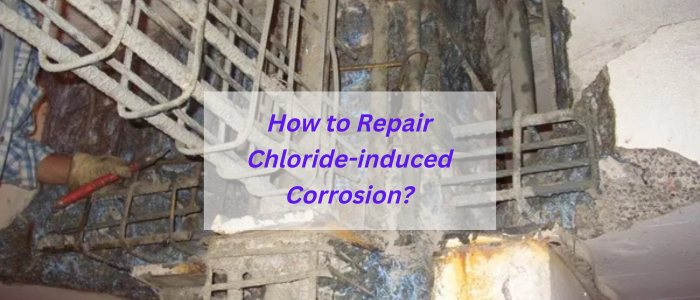We talked about corrosion in another article, please read it first so you can understand what corrosion is and how damage occurs from the beginning.
What is chloride-induced Corrosion?
As the name implies, chloride-induced corrosion is a type of corrosion that occurs due to the existence of chloride ions so you can find it a lot in marine environments and structures where authorities apply de-icing salts to get rid of ice. Chloride-induced corrosion can hit parking structures, bridges, piers, and roads and so on.
Authorities and owners spend huge expenses to repair the damage by chloride-induced corrosion
Mechanism of Chloride-Induced Corrosion
Briefly, the process starts by chloride ions from the environment diffuse into concrete to reach the steel bars level.
Once the concentration of chloride reaches at bar level a critical value (known as threshold chloride concentration and engineers assume it conservatively as 0.1% of weight of binder), the passive layer disintegrates.
Corrosion then initiates and creates pitting corrosion (localized spots of corrosion along the bar length). The end result is expansion of steel bars due to rust and cracking/spalling of concrete.
Steps to Repair Chloride-induced Corrosion
The problem with chloride-induced corrosion is that the corrosion mechanism is often not fully understood by engineers and clients.
Whereas carbonation-induced corrosion causes relatively large areas of the reinforcement to corrode, chloride contamination usually causes very localized areas of the steel to corrode, which is known as pitting corrosion.
This can result in deep ‘pits’ in the steel surface and considerable localized loss of section. Often the corrosion deposits are black and hard and there appears to be little loss of section at first, until the deposits are either dug out with a penknife, or water jetted clear, when the full extent of damage can be seen.
Repairing chloride-contaminated concrete is similar to that previously written for carbonation-induced corrosion except for several very important points:
- All corrosion deposits must be removed by grit blasting or water jetting to bright steel. Failure to do so leaves chloride contamination behind in the corrosion deposits and failure will ensue.
- All of the chloride contaminated concrete must be removed, not just the areas which have spalled or delaminated. (See also ‘incipient anode effect’.)
- A criterion often employed is to repair all areas where chloride exceeds, say, 0.4% or 0.5% of cement. Strictly, for chloride added at the time of mixing, the criterion should be 0.4% or for chloride ingressing post-hardening, 0.2%. For pre-stressed or post-tensioned concrete, the maximum tolerable chloride level is only 0.1% by mass of cement.
Safety First
Because cementitious repair mortars are highly alkaline and might result in burns or dermatitis, wearing appropriate protection clothes is imperative. Similarly, when mixing cement, dust masks need to be used.
Read Also:
